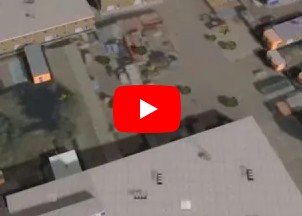|
|
| (30 intermediate revisions by 6 users not shown) |
| Line 1: |
Line 1: |
| ==Considerations==
| | {{unavailable}} |
| The Waterwijzer Overlay communicates with the [https://waterwijzerlandbouw.wur.nl/query-wdb.php?f=JSON Waterwijzer API] to calculate the loss of earnings for agriculture crops based on the following parameters: | | The Waterwijzer module calculates the result for the following question: |
| * A climate scenario;
| | ''I want to know the expected agricultural yield loss based on the crop, soil type and local groundwater levels, given a climate scenario and the expected weather.'' |
| * A weather station;
| |
| * Type of soil;
| |
| * Type of crop;
| |
| * Highest and lowest (averaged) ground water levels;
| |
| * The irrigation parameter, which in the [https://waterwijzerlandbouw.wur.nl/tool.html Waterwijzer tool] is active for a number of the crop types, is currently not taken into account.
| |
|
| |
|
| ==Concept==
| | In order to answer this question using the {{software}} a connection (using API) was realized with Wageningen University's [https://waterwijzerlandbouw.wur.nl/ Waterwijzer Landbouw module]. |
| #User generates a project for an area in the Netherlands using the {{software}}.
| |
| #*The Dutch BRP geo-plugin retrieves the known agriculture plots. Each agriculture plot has an identification number for the type of plot, which is stored in the [[BRP_CODE]] attribute.
| |
| #*The Dutch BRO geo-plugin retrieves the known soil types, stored as underground terrain. The simplified [[BOFEK_ID]] is configured by default for each terrain type of these terrain.
| |
| #User adds a [[Waterwijzer Overlay]] and configures:
| |
| ##The climate scenario and weather station are configured using the Waterwijzer Overlay Wizard
| |
| ##The ground water levels can also be configured using the Waterwijzer Overlay Wizard. These ground water levels can be provided as:
| |
| ##* A [[GeoTiff|geotiff]] containing ground water depths;
| |
| ##* A result type of the [[Subsidence Overlay]]; See [[Hi_ground_water_result_type_(Subsidence_Overlay)|high]] and [[Low_ground_water_result_type_(Subsidence_Overlay)|low ground water depths]].
| |
| ##* A result type of the [[Groundwater_(Overlay)|Groundwater Overlay]]; See [[Ground_last_value_result_type_(Water_Overlay)|last ground water depth]] and [[Ground_max_value_result_type_(Water_Overlay)|max depth]]
| |
| # User triggers the calculation of the overlay. The Waterwijzer Module sends the data to Waterwijzer API and receives data on loss of earnings.
| |
| # The Waterwijzer module then stores the grid data under following result type overlays, categorized as:
| |
| #* [[Damage_dry_result_type_(Waterwijzer Overlay)|Dry]]: low water levels cause crops to dry out;
| |
| #* [[Damage_wet_result_type_(Waterwijzer Overlay)|Wet]]: high water levels cause crops' roots to suffocate;
| |
| #* [[Damage_indirect_result_type_(Waterwijzer Overlay)|Indirect]]: Indirect causes, related to combinations of crop, soil, weather and water levels
| |
| #* [[Damage_salt_result_type_(Waterwijzer Overlay)|Salt]]: salt water irrigation causes damage to crops;
| |
| #* [[Damage_total_result_type_(Waterwijzer Overlay)|Total]]: the sum of the previous four categories.
| |
|
| |
|
| <ul>
| | {{article end |
| <li style = "display:inline-block">[[File:Waterwijzer_damage_dry.jpeg|200xpx]]</li>
| | |seealso= |
| <li style = "display:inline-block">[[File:Waterwijzer_damage_wet.jpeg|200xpx]]</li>
| | * [[Waterwijzer Overlay]] |
| <li style = "display:inline-block">[[File:Waterwijzer_damage_indirect.jpeg|200xpx]]</li>
| | |videos= |
| <li style = "display:inline-block">[[File:Waterwijzer_damage_salt.jpeg|200xpx]]</li> | | <gallery widths=300px> |
| <li style = "display:inline-block">[[File:Waterwijzer_damage_total.jpeg|200xpx]]</li>
| | File:YoutubeLogo1.jpg|Koppeling met Waterwijzer Landbouw van de Wageningen Universiteit in Tygron (Dutch only)|link=https://youtu.be/S6159aWGDyM |
| </ul>
| | File:YoutubeLogo1.jpg|Uitleg van de Waterwijzer Landbouw 2.0, versie september 2020 (Dutch only)|link=https://youtu.be/FXMM3ib-ggw |
| | | </gallery> |
| ===Calculation===
| | }} |
| The Waterwijzer Overlay is a [[Grid Overlay]]. The project area is rasterized into grid cells, each containing a value for:
| | {{Template:Waterwijzer Module buttons}} |
| * the type of crop, identified by their [[Brp code (Waterwijzer Overlay)|BRP Code]].
| |
| * the soil: [[BOFEK_ID]]
| |
| * the lowest (average) ground water depth: distance to surface, from geotiff or result overlay.
| |
| * the highest (average) ground water depth: distance of surface, from geotiff or result overlay.
| |
| The climate scenario and weather station are a single value for each grid cell.
| |
| Each unique combination of crop, soil, ground water depths, climate scenario and weather station leads to four loss of earning values, one for each category.
| |
| These categories are:
| |
| * [[Damage_dry_result_type_(Waterwijzer Overlay)|Dry]]: A low water level (high ground water depth) can limit the amount of water absorbed by plant roots.
| |
| * [[Damage_wet_result_type_(Waterwijzer Overlay)|Wet/Oxygen]]: A high water level (low ground water depth) can lead to suffocation of the plant roots.
| |
| * [[Damage_indirect_result_type_(Waterwijzer Overlay)|Indirect]]: Indirect causes due to soil type in combination with crop, water levels, climate scenario and weather station's weather patterns.
| |
| * [[Damage_salt_result_type_(Waterwijzer Overlay)|Salt]]: The damage occurring due to irrigation with salt water.
| |
| These four categories are also summed up to a total number, resulting in a [[Damage_total_result_type_(Waterwijzer Overlay)|fifth result type]].
| |
This functionality is currently unavailable or non-functional.
The Waterwijzer module calculates the result for the following question:
I want to know the expected agricultural yield loss based on the crop, soil type and local groundwater levels, given a climate scenario and the expected weather.
In order to answer this question using the Tygron Platform a connection (using API) was realized with Wageningen University's Waterwijzer Landbouw module.
Videos
-
Koppeling met Waterwijzer Landbouw van de Wageningen Universiteit in Tygron (Dutch only)
-
Uitleg van de Waterwijzer Landbouw 2.0, versie september 2020 (Dutch only)
See also





